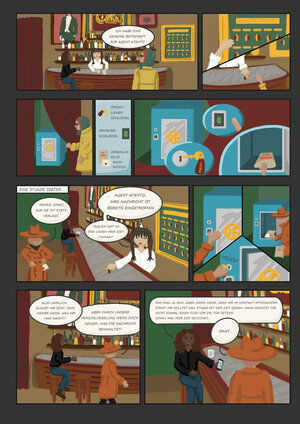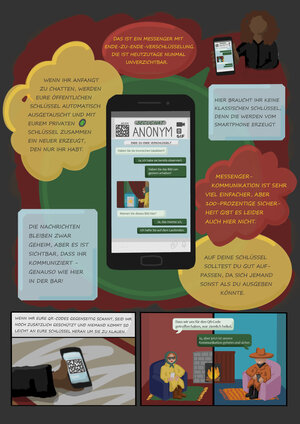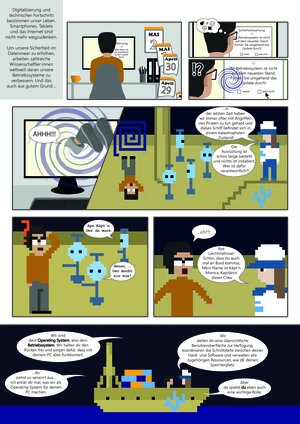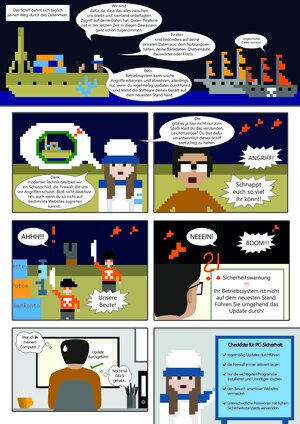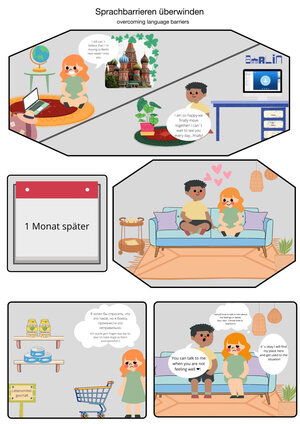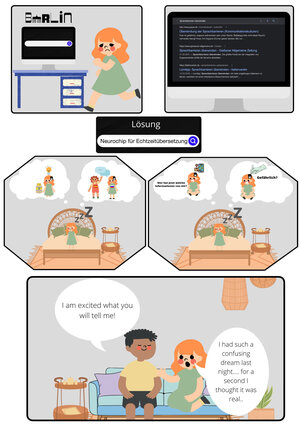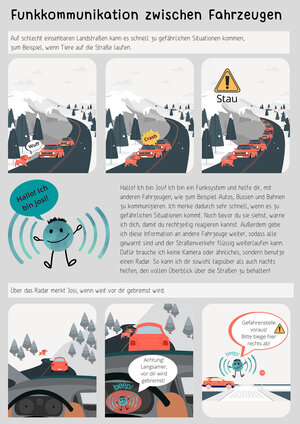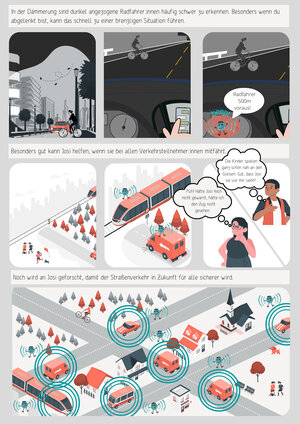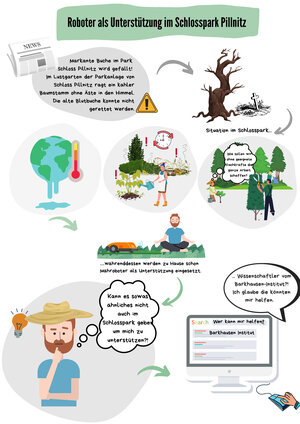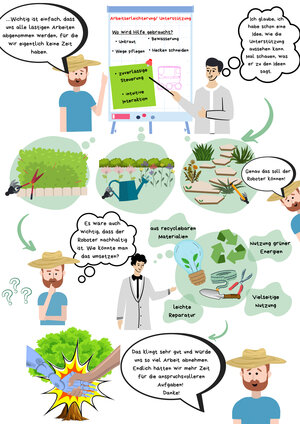Science Communication with Science Comics
How can you explain complex research topics in an exciting way with science comics?
The Barkhausen Institut and the Institute of Media and Communication at TU Dresden spent a semester investigating this question in collaboration with the comic artist Veronika Mischitz.
In five small groups, students developed stories and characters about topics suggested by scientists of the Barkhausen Institut. The topics deal with research projects and innovations that present the opportunities and challenges of the digital world.
We use the comics that were created in this collaborative project in our work with teenagers in our Learning Lab. On top of that, we use the comics to evaluate the impact potential of this mediation format.
The project took place in the winter semester 2021/2022.
The secret of the encrypted message
How does the so-called asymmetric encryption work when using messenger apps, and why do we need it?
Messenger apps for personal communication such as WhatsApp, Telegram and the like are nowadays commonplace and an essential tool for young and old alike.
This comic aims to raise awareness among readers that messenger apps can protect their private messages if encrypted securely. The story ventures to illustrate this complex system in an effort to make it easier to understand.
Comment vom Matthis (er hatte in Engl geantwortet):
“I think it is important to understand what information about you can be extracted and by whom to be able to actively choose to use a service or not. Understanding the technology behind instant messaging helps to understand what kind of information a message service is able to gather (and what not). In my research I think about information flow and ways protect it from data attacks, although on a very different layer it resembles the ideas of the comic topic. The students I worked with were eager to understand the technologic mechanics and the resulting security. It was good to explain everything in much more detailed than could be integrated into a comic, so that the students had a huge knowledge base to carve the comic out of.”
Operating systems
Operating systems are the heart of every complex electronic device. Without them, nothing works. But are users aware of this?
The aim of the comic is to clarify which security functions the operating system assumes and how important it is for all users. The users' own responsibility in this regard is particularly emphasized. An operating system can only do its job properly if users update it regularly. With a short checklist at the end, the comic points out further measures that all users should consider on their own PCs in order to ensure the security of the system.
Comment vom Matthis (er hatte in Engl geantwortet):
“I think it is important to understand what information about you can be extracted and by whom to be able to actively choose to use a service or not. Understanding the technology behind instant messaging helps to understand what kind of information a message service is able to gather (and what not). In my research I think about information flow and ways protect it from data attacks, although on a very different layer it resembles the ideas of the comic topic. The students I worked with were eager to understand the technologic mechanics and the resulting security. It was good to explain everything in much more detailed than could be integrated into a comic, so that the students had a huge knowledge base to carve the comic out of.”
Conquering language barriers
There are many different languages in the world and no person can master them all. Shall a neurochip help us to overcome this barrier?
In everyday life, at work or in business, difficulties sometimes arise because of the multitude of languages. The comic’s heroine thinks about whether a brain-implanted microchip that can translate foreign languages in real-time could be a solution. With this fictional idea, the comic invites readers to form their own opinions about this future technology and the importance of trustworthy sources of information.
Radio communication between vehicles
How will vehicles communicate with each other in the future and why is it necessary for them to be able to do so?
The comic explains the functions of a new technology that enables vehicles to communicate with each other. This involves communication via the radars (which already exist) in the vehicles. Everyday examples are shown in which real-time data transmission takes place between vehicles and road infrastructure components. The comic presents a technology that is under development and that the scientists of the BI are working on.
Garden Robot
Due to climate changes and the resulting increased effort required to care for trees, hedges and flowers, gardeners at Pillnitz Palace Park need assistance. How about an automated robot?
The comic presents background information and initial thoughts on one of our research projects, in which we are developing a semi-autonomous robot under the direction of the Staatliche Schlösser, Burgen und Gärten gGmbH to support the gardeners in their work. It shows how the project idea emerged, what tasks the robot could perform, and that it should definitely be climate-friendly itself.

